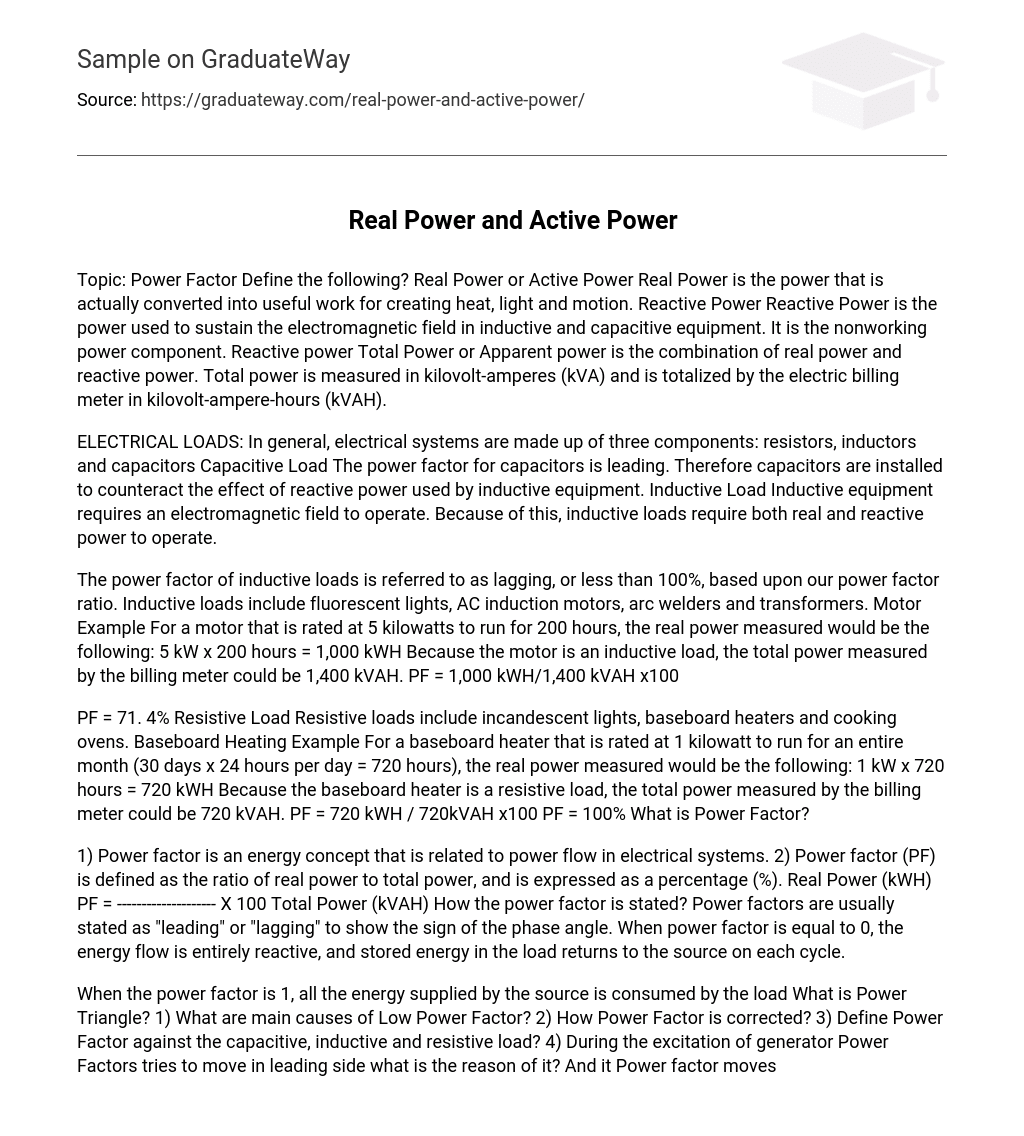Topic: Power Factor Define the following? Real Power or Active Power Real Power is the power that is actually converted into useful work for creating heat, light and motion. Reactive Power Reactive Power is the power used to sustain the electromagnetic field in inductive and capacitive equipment. It is the nonworking power component. Reactive power Total Power or Apparent power is the combination of real power and reactive power. Total power is measured in kilovolt-amperes (kVA) and is totalized by the electric billing meter in kilovolt-ampere-hours (kVAH).
ELECTRICAL LOADS: In general, electrical systems are made up of three components: resistors, inductors and capacitors Capacitive Load The power factor for capacitors is leading. Therefore capacitors are installed to counteract the effect of reactive power used by inductive equipment. Inductive Load Inductive equipment requires an electromagnetic field to operate. Because of this, inductive loads require both real and reactive power to operate.
The power factor of inductive loads is referred to as lagging, or less than 100%, based upon our power factor ratio. Inductive loads include fluorescent lights, AC induction motors, arc welders and transformers. Motor Example For a motor that is rated at 5 kilowatts to run for 200 hours, the real power measured would be the following: 5 kW x 200 hours = 1,000 kWH Because the motor is an inductive load, the total power measured by the billing meter could be 1,400 kVAH. PF = 1,000 kWH/1,400 kVAH x100
PF = 71. 4% Resistive Load Resistive loads include incandescent lights, baseboard heaters and cooking ovens. Baseboard Heating Example For a baseboard heater that is rated at 1 kilowatt to run for an entire month (30 days x 24 hours per day = 720 hours), the real power measured would be the following: 1 kW x 720 hours = 720 kWH Because the baseboard heater is a resistive load, the total power measured by the billing meter could be 720 kVAH. PF = 720 kWH / 720kVAH x100 PF = 100% What is Power Factor?
1) Power factor is an energy concept that is related to power flow in electrical systems. 2) Power factor (PF) is defined as the ratio of real power to total power, and is expressed as a percentage (%). Real Power (kWH) PF = ——————– X 100 Total Power (kVAH) How the power factor is stated? Power factors are usually stated as “leading” or “lagging” to show the sign of the phase angle. When power factor is equal to 0, the energy flow is entirely reactive, and stored energy in the load returns to the source on each cycle.
When the power factor is 1, all the energy supplied by the source is consumed by the load What is Power Triangle? 1) What are main causes of Low Power Factor? 2) How Power Factor is corrected? 3) Define Power Factor against the capacitive, inductive and resistive load? 4) During the excitation of generator Power Factors tries to move in leading side what is the reason of it? And it Power factor moves to leading side then what we have to do? If the power factor remains in leading side then what are losses of it?





